How to Make Organic Matter? Discover the Key to Thriving Plants!
- June 13, 2024
- 0 comment
Asking how to make organic matter? Boost your soil’s fertility with our straightforward, practical tips for rich soil. Ever wondered how to make organic matter? It’s not as complex as it sounds.
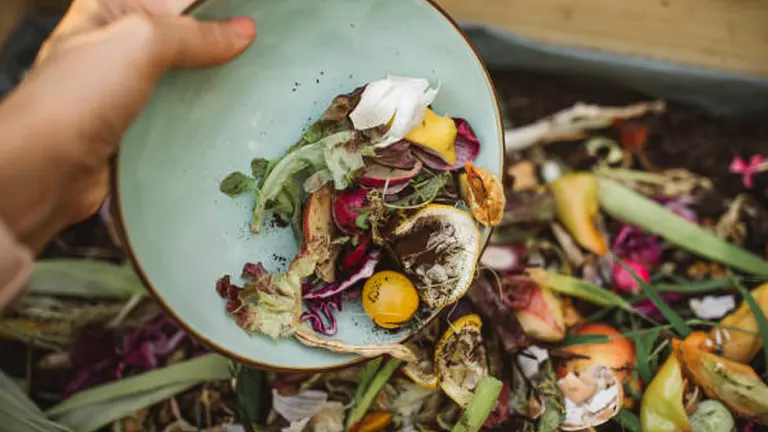
With a few simple steps, you can improve your soil’s health and fertility. Let’s explore how easy it is to turn organic waste into a treasure for your garden.
Table of Contents
- Understanding Organic Matter
- Sources of Organic Matter
- Creating Organic Matter at Home
- Applying Organic Matter to the Garden
- Benefits of Organic Matter to Plants
- Troubleshooting Common Issues
- Advanced Composting Techniques
- Conclusion
- FAQs
Understanding Organic Matter
Definition and Types of Organic Matter
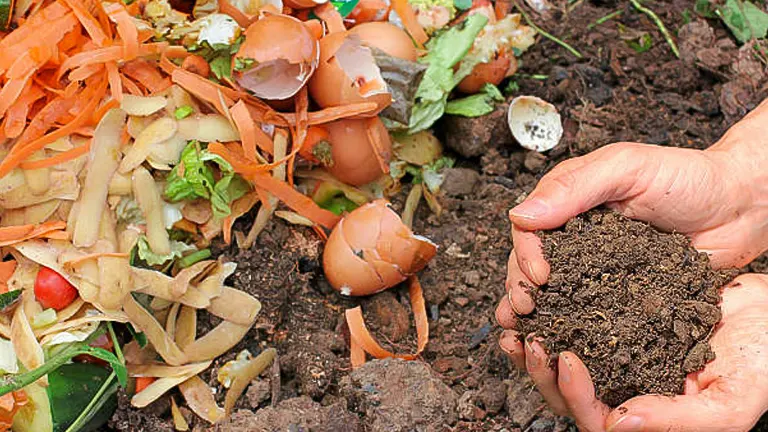
Organic matter comprises decomposed plant and animal residues that enrich the soil with nutrients and improve its physical properties. It is primarily categorized into two types: green and brown materials.
- Green Materials: These are typically moist and nitrogen-rich. Examples include grass clippings, vegetable scraps, and coffee grounds. They are crucial for feeding the microorganisms that break down the compost.
- Brown Materials: These are dry, carbon-rich items such as branches, straw, and dried leaves. They provide the compost with structure and help maintain adequate aeration and moisture levels.
Both types are essential in a balanced compost system, with a recommended carbon to nitrogen (C) ratio of about 30:1. This ratio ensures optimal microbial activity for efficient decomposition.
Nutrient Content and Decomposition Rates of Common Compost Materials
| Material Type | Nitrogen Content (%) | Carbon Content (%) | Decomposition Rate |
|---|---|---|---|
| Grass clippings | 4.0 | 19.0 | Fast |
| Vegetable scraps | 2.5 | 25.0 | Moderate |
| Coffee grounds | 2.1 | 20.0 | Moderate |
| Straw | 0.8 | 75.0 | Slow |
| Dried leaves | 0.9 | 60.0 | Slow |
| Branches | 0.5 | 80.0 | Very Slow |
Role in Soil Fertility and Plant Health
Incorporating organic matter into soil enhances its structure, increasing its ability to retain air and moisture—both critical for healthy root development. The slow release of nutrients from decomposing organic matter provides a continuous, balanced supply of essential elements like nitrogen, phosphorus, and potassium, which are vital for plant growth.
The benefits of organic matter go beyond nutrient supply:
- Soil Structure Improvement: Organic matter helps form soil aggregates, tiny granules that improve soil texture and facilitate root growth.
- Water Retention: Organic soil can hold water up to 90% of its weight, providing a reservoir for plants during dry periods.
- Biodiversity Boost: The introduction of organic matter increases the diversity of soil organisms, including beneficial bacteria and fungi, which play critical roles in nutrient cycling, disease suppression, and soil structure stability.
Adding organic matter to soil is a sustainable practice that enhances its fertility and resilience, promoting healthier plants and a more vibrant ecosystem. This holistic approach not only improves the immediate garden environment but also contributes to broader environmental health by recycling waste and reducing chemical inputs.
Sources of Organic Matter
Kitchen and Garden Waste
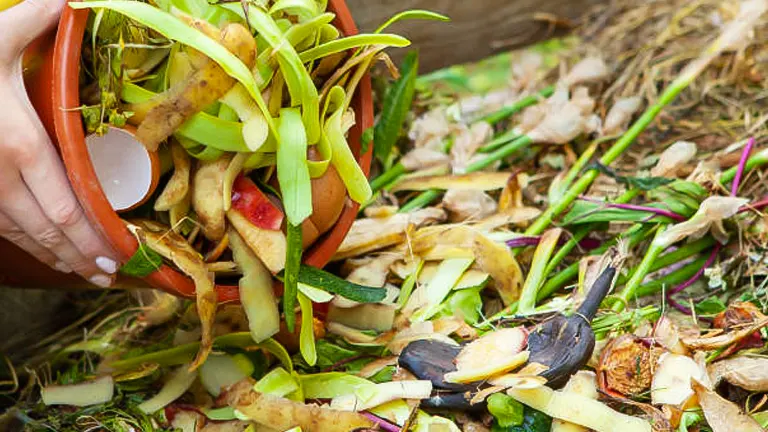
One of the most accessible methods for creating organic matter is through the recycling of kitchen and garden waste. This waste can be categorized effectively as green and brown materials:
- Green Materials: Kitchen scraps like vegetable peels, fruit skins, and coffee grounds are nitrogen-rich and decompose quickly, providing essential nutrients and fostering microbial growth.
- Brown Materials: Your garden contributes brown materials such as fallen leaves and grass clippings, which are carbon-rich. These materials decompose slower, adding structure to the compost which helps maintain necessary aeration and moisture levels.
Strategically collecting and balancing these materials can significantly enhance the composting process, creating a rich, nutrient-dense organic matter ideal for garden use.
Nutrient Content and Carbon-to-Nitrogen Ratios of Common Composting Materials
| Material Type | Carbon Content | Nitrogen Content | Carbon Ratio |
|---|---|---|---|
| Vegetable peels | 30% | 2.5% | 12:1 |
| Fruit skins | 40% | 1.5% | 26:1 |
| Coffee grounds | 20% | 2.0% | 10:1 |
| Fallen leaves | 50% | 0.8% | 62:1 |
| Grass clippings | 25% | 4.0% | 6:1 |
Larger Organic Inputs
For gardens with more space, incorporating larger organic inputs such as branches, untreated wood chips, or straw is highly beneficial. These bulky materials decompose slowly but are crucial for enhancing the physical structure of the compost. They ensure better aeration and help regulate moisture levels, which is vital for the microbial activity necessary for effective composting.
Manure and Animal By-products
Animal manure is a potent source of organic matter. It’s rich in nutrients and can dramatically improve soil fertility when used correctly:
- Chicken Manure: High in nitrogen, phosphorus, and potassium, but it must be composted to lower the risk of burning plants.
- Cow Manure: Less nutrient-dense than chicken manure but excellent for improving soil texture and moisture retention.
- Horse Manure: Similar to cow manure with the added benefit of fibrous content that aids in soil aeration.
It’s essential to ensure that manure is well-composted before application to eliminate pathogens and reduce the risk of introducing harmful microorganisms to your garden. Avoid using manure from dogs, cats, or other carnivorous animals as it may contain pathogens that are hazardous to human health.
Creating Organic Matter at Home
Composting Basics

Composting is an eco-friendly process where organic green and brown materials decompose to form a nutrient-rich soil amendment known as compost. This process transforms your kitchen scraps and yard waste into a valuable resource that enhances soil health and plant vitality.
- Site Selection: Choose a dry, shady spot near a water source for your compost setup. This location helps maintain the necessary moisture levels without the pile getting too hot, which could kill beneficial microbes.
- Layering Technique: Build your compost pile by alternating layers of green materials (nitrogen-rich) and brown materials (carbon-rich). This layering technique helps maintain a balanced environment conducive to decomposition.
Key Factors for Successful Composting
- Carbon-to-Nitrogen Ratio: The ideal C ratio for a compost pile is about 30:1 (carbon). This ratio ensures that microorganisms have the right amount of each element for efficient decomposition without excess nitrogen being released as ammonia.
- Moisture and Aeration: The pile should be kept as moist as a wrung-out sponge. Regular turning introduces oxygen, which is crucial for aerobic decomposition, speeds up the process, and prevents foul odors and pests.
Ideal Conditions for Composting
| Factor | Ideal Condition | Why It Matters |
|---|---|---|
| C Ratio | 30:1 | Balances decomposition speed and nutrient quality. |
| Moisture | 50-60% (like a wrung-out sponge) | Supports microbial activity without waterlogging. |
| Turning Frequency | Every 4-6 weeks | Ensures oxygenation and uniform decomposition. |
| Temperature | 130-150°F (55-65°C) | Optimal range for most decomposer organisms. |
Advanced Tips for Enhanced Composting
- Temperature Monitoring: Compost piles should reach temperatures between 130-150°F to effectively break down materials and kill pathogens. A compost thermometer can help monitor this.
- Microbial Boosters: Occasionally adding a shovelful of finished compost or garden soil to the new pile can introduce diverse microorganisms that accelerate the decomposition process.
- Material Size: Smaller material sizes can speed up composting as they increase the surface area available to microbes. Chopping or shredding garden waste before adding it to the pile can be beneficial.
By adhering to these scientifically-backed practices, you can optimize your home composting efforts, turning organic waste into a premium garden amendment that enhances soil fertility and plant health.
Applying Organic Matter to the Garden
When and How to Add Organic Matter to Soil
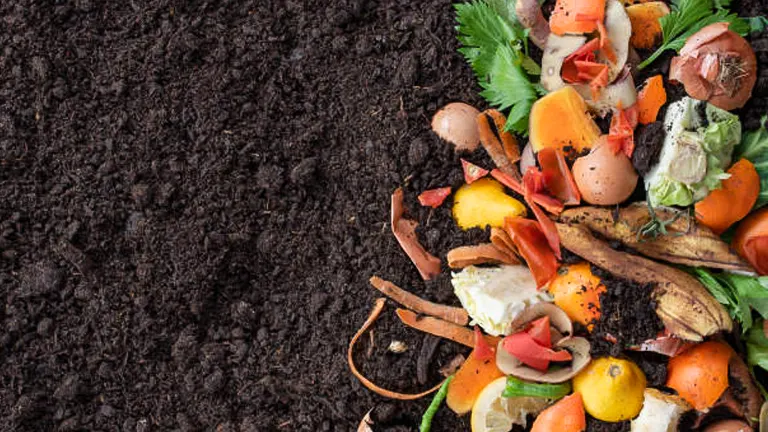
The best time to add organic matter to your garden soil is either during the spring as you prepare beds for planting or in the fall when you can incorporate it into the soil at the end of the growing season. This timing allows the organic matter to integrate and stabilize within the soil, making nutrients available when plants start to grow.
To apply organic matter, spread a layer of compost about two to four inches thick over your garden beds. Use a garden fork or tiller to mix it into the top six to eight inches of soil. For established gardens, particularly in perennial beds or around trees and shrubs, you can spread the compost as a top dressing. Over time, natural processes and earthworm activity will help incorporate the compost into the subsoil.
Dos and Don’ts
Here are some important tips to remember:
- Do: Ensure the compost is fully matured before applying it to the garden to avoid drawing nitrogen away from your plants as it continues to decompose.
- Don’t: Over-apply organic matter. Too much can lead to nutrient imbalances and may even harm plant roots.
- Do: Consider the specific needs of your plants. Some might benefit from more frequent applications of organic matter, while others may thrive with less.
Benefits of Organic Matter to Plants
Enhanced Growth and Yield
Organic matter significantly improves soil structure, increasing its porosity and enabling better root penetration. This allows plants to access a deeper and broader range of soil nutrients and water. Research shows that soils with higher organic content can increase plant yield by up to 20-40% depending on the crop type and initial soil condition. Enhanced soil fertility from organic matter also leads to healthier, more vigorous plants, resulting in increased biomass and yield.
Impact of Organic Matter on Soil Properties and Plant Growth
| Soil Property | Improvement from Organic Matter | Plant Growth Impact |
|---|---|---|
| Water-holding capacity | Increases by up to 50% | Reduces drought stress, enhances growth during dry periods |
| Nutrient availability | Increases essential nutrients like nitrogen, phosphorus, potassium | Improves nutrient uptake, increases yield and quality |
| Soil structure | Improves aggregation, reduces erosion | Enhances root development, supports stronger plants |
Disease Resistance
Organic matter contributes to soil health by fostering a diverse microbial ecosystem. This biodiversity is crucial in suppressing pathogenic organisms that cause plant diseases. For example, studies have shown that increased organic matter can reduce the incidence of common fungal diseases like root rot by fostering competitive microbial environments that inhibit the growth of pathogens. As a result, plants are more resilient and can better resist pests and diseases, minimizing the need for chemical interventions.
Environmental Benefits
Incorporating organic matter into garden soil is not only beneficial for plant health but also for the environment:
- Waste Reduction: Composting kitchen and garden waste reduces the amount of organic waste sent to landfills, decreasing methane emissions, a potent greenhouse gas.
- Carbon Sequestration: Soil enriched with organic matter can store, or sequester, carbon dioxide, contributing to the reduction of atmospheric greenhouse gases.
- Water Conservation: Organic-rich soil retains more water, reducing runoff and decreasing the need for frequent irrigation, thereby conserving water resources.
These environmental benefits are integral to promoting sustainable gardening practices that support not only local biodiversity but also global ecological health.
Troubleshooting Common Issues
Composting is an effective way to recycle organic waste into nutrient-rich soil, but it can occasionally encounter problems. Understanding these issues and knowing how to address them can greatly enhance your composting success.
Common Problems and Solutions
- Bad Odors
- Cause: Often a result of anaerobic conditions due to excessive moisture and insufficient aeration.
- Solution: Turn the compost more frequently to reintroduce oxygen and add brown materials like dry leaves or shredded newspaper to absorb excess moisture.
- Slow Decomposition
- Cause: Can be due to a lack of nitrogen, insufficient moisture, or poor aeration.
- Solution: Ensure the compost is as moist as a wrung-out sponge, add nitrogen-rich green materials like kitchen scraps or grass clippings, and turn the pile to improve airflow.
- Pests
- Cause: Attraction to proteins and fats in meat, dairy, or oily foods.
- Solution: Exclude animal products and fats from the compost and secure the bin with a tight-fitting lid or cover.
Compost Troubleshooting Guide
| Issue | Symptoms | Potential Causes | Recommended Solutions |
|---|---|---|---|
| Bad Odors | Foul smell resembling rotten eggs | Excess moisture, poor aeration | Turn pile, add brown materials, improve drainage |
| Slow Decomposition | Little change, remains bulky | Low nitrogen, low moisture, compaction | Add green materials, moisten, turn pile |
| Pests | Presence of rodents or insects | Inclusion of meat, dairy, oily foods | Remove animal products, secure bin with lid |
Adjusting Compost Balance
Achieving and maintaining the correct balance of green and brown materials is vital for effective composting. Here are some additional tips:
- For a Wet, Smelly Pile: Increase the ratio of brown materials (carbon-rich) to absorb moisture and help air penetrate the compost.
- For a Dry, Slow-Processing Pile: Boost the green materials (nitrogen-rich) to speed up microbial activity and add moisture if the pile is too dry.
Advanced Composting Techniques
For gardeners aiming to optimize their composting processes, advanced techniques not only speed up the decomposition but also significantly improve the quality of the resulting compost. We explore three sophisticated methods: hot composting, Bokashi composting, and vermicomposting, each offering unique advantages and suitable for different composting needs.
Hot Composting
Hot composting is engineered to achieve rapid decomposition, converting organic waste into usable compost within just a few weeks. This method involves maintaining the compost pile at elevated temperatures, typically between 135°F and 160°F. These temperatures are crucial as they accelerate microbial activity, leading to quicker breakdown of organic materials, and high enough to eliminate harmful pathogens and weed seeds.
Key Steps for Hot Composting:
- Balance Your Materials: Ensure a balanced mix of nitrogen-rich green materials and carbon-rich brown materials.
- Maintain Moisture and Aeration: The compost should be moist but not wet, and it should be turned regularly to ensure adequate oxygenation.
- Temperature Monitoring: Regularly check the temperature to ensure it remains within the optimal range for decomposition.
Bokashi Composting
Bokashi composting, originating from Japanese practices, is an anaerobic process that effectively ferments organic waste, including meats, dairy, and cooked foods, which are generally not recommended for traditional composting. This method utilizes a special inoculant, a mix of beneficial microbes on a bran-based substrate, to accelerate the fermentation in a sealed container.
Benefits of Bokashi Composting:
- Speed: It can ferment waste in as little as 10 to 14 days.
- Versatility: Ideal for indoor settings and small spaces.
- Odor Management: The sealed, anaerobic conditions prevent foul odors, making it suitable for indoor use.
Vermicomposting
Vermicomposting utilizes specific types of earthworms, predominantly red wigglers, to break down organic matter. This method is excellent for processing kitchen scraps and paper waste on a smaller, often indoor, scale.
Optimal Conditions for Vermicomposting:
- Temperature: Keep at 55-75°F for active worm metabolism.
- Moisture Content: The bedding should be moist but not soggy.
- Food Source: Regular, but not excessive, additions of food scraps ensure steady food availability for the worms.
Worm castings, the byproduct of vermicomposting, are highly valued for their nutrient density and soil conditioning properties.
Comparative Table of Composting Methods
| Technique | Optimal Conditions | Decomposition Time | Output Quality |
|---|---|---|---|
| Hot Composting | 135°F – 160°F, aerated | 4-8 weeks | Nutrient-rich, pathogen-free compost |
| Bokashi | Anaerobic, with inoculants | 2-4 weeks | Pre-compost, requires further decomposition |
| Vermicomposting | 55°F – 75°F, moist | Continuous | High-quality worm castings |
By integrating one or more of these advanced composting methods into your gardening routine, you can produce high-quality compost more efficiently. This not only enhances your garden’s fertility and productivity but also supports more sustainable gardening practices.
Related Post
- How to Build a Barn: A Step-by-Step Guide for Beginners
- How to Build a Sustainable Compost Bin: Easy and Eco-Friendly DIY
- How to Fertilize Bougainvillea: A Complete Guide for Stunning Blooms
- How to Fertilize Apple Trees: Essential Tips for a Bountiful Harvest
- How to Fertilize Lemon Trees: Secrets for Thriving Citrus
- How to Fertilize Avocado Tree: A Step-by-Step Guide for Lush Growth
- 10 Best Bow Saws to Buy in 2024: Top Picks for the Money
- Best Miter Saw For Beginners
- Top 10 Pruning Saws to Buy in 2024: Best for the Money
- 7 Best Pocket Chainsaw
Conclusion
Creating and utilizing organic matter through composting is an invaluable practice for any gardener. It enhances soil health, supports plant growth, and contributes to a sustainable environment. By understanding the essentials shared in this guide, you can transform your garden waste into gold and see tangible benefits in the vitality of your garden.
FAQs
- What is the ideal ratio of green to brown materials in compost?
Aim for a ratio of about 3 parts brown materials (carbon-rich) to 1 part green materials (nitrogen-rich). This balance helps accelerate decomposition while maintaining a healthy compost environment. - Can I use paper products as brown material in my compost?
Yes, shredded non-glossy paper, cardboard, and similar paper products can be used as brown materials. Ensure they are not coated with plastic or heavy inks to avoid contaminating your compost. - How often should I turn my compost pile?
Turn your compost pile every 4 to 6 weeks to introduce oxygen, which is crucial for the composting process. Increasing the frequency can speed up decomposition. - What can I do to speed up the composting process?
To speed up composting, increase the surface area of your materials by chopping or shredding them before adding to the compost. Also, ensure the pile is moist and well-aerated. - Are there any materials I should avoid putting in my compost?
Avoid adding meat, dairy products, fats, oils, diseased plants, and pet feces, as these can attract pests and pathogens to your compost pile. - How do I know when my compost is ready to use?
Compost is ready when it’s dark, crumbly, and has an earthy odor. The original materials should no longer be recognizable, and it should feel like rich soil. - Can compost be used as the only fertilizer for plants?
While compost provides many essential nutrients, depending on your plants’ specific needs, you may still need to use additional fertilizers, especially for nutrient-hungry plants. - What should I do if my compost pile is too wet and smelly?
Add more brown materials like dry leaves, straw, or sawdust to absorb excess moisture and balance the materials. Also, turn the pile to improve aeration and reduce odors.
Ready to transform your garden? Start making organic matter today and see the remarkable difference in your plant’s growth and health. Let nature do the work and enjoy the bounty.
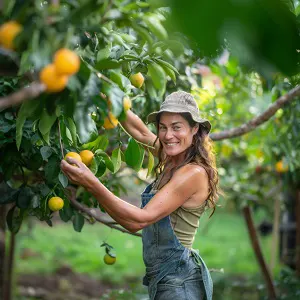
Emma Hudson
Forestry AuthorEmma's experience in farming shapes her detailed guides on gardening and farming tools, providing practical, actionable advice grounded in real-world experience. Her work targets both newcomers and experienced farmers, aiming to enhance their practices with a mix of traditional wisdom and modern techniques. By making complex agricultural concepts accessible, Emma's guides serve as valuable tools for those navigating the challenges of contemporary farming, offering strategies for sustainable success.




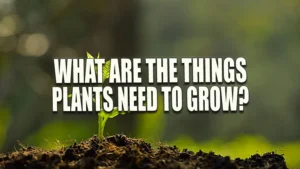






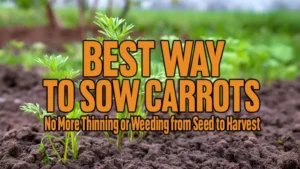

Leave your comment